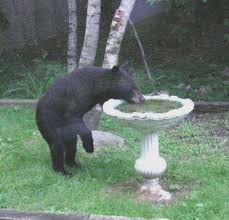(I rode my bike during Hurricane Irene and took some photos and will share them in my next post. This was what I was working on before Irene hit us.)
Before my first daughter was born I took an intensive course in wilderness medicine and became a Wilderness Emergency Medical Technician through the outdoor organization S.O.L.O. in New Hampshire. This trained me to take care of various outdoor emergencies such as treating injured hikers to dealing with various animal attacks.
During one of our training days the instructors discussed the 12 essential items that you should bring along if you are headed out into the wilderness. I lost and found this list many times during the past 13 years as I have moved in and out of apartments. This list of "Essential Items" started to take on a mythical quality; I thought that if I lost the list, I would be losing some vital information that could save my life someday. So I clung on to this idea as I kept on losing and finding my list over the years. But when I cleaned out my basement this summer, I found it again and decided to put an end to this list by sharing it with you on the Internet and saving it as a Google Document.
So without further adieu, here is my mythical list of the 12 Essential Items that you need to take with you if you are venturing into the wilderness for a hike!
This list was compiled by expert search and rescue instructors during July of 1998.
1.
Map
2.
Compass
3. First Aid Kit
4.
Matches
5.
Fire Starter
6. Food
7. Clothes
8. Water
9. Knife
10. Flashlight
11. Blanket
12. Whistle
13. Sunglasses
Now as I look at the list, being thirteen years wiser, here is what I would leave behind.
Sunglasses. What am I going to do with sunglasses? Put them on my face right before I die so my rescuers can think that I am cool when they are putting my dead body in a body bag? Sunglasses are not essential.
Blanket. No way. I am not carrying a blanket every time I hike in the woods. What am I, Linus?
Flashlight. Am I that scared of the dark? If I am lost I will find a nice, warm, dry place for shelter BEFORE sundown. I don't like the idea of carrying around a chunky, odd object that I may not use. The D batteries will probably be dead from Irene anyway.
Fire starter. Can you say pine needles? If you can, there is your fire starter.
Compass. I know how to find Polaris, the North Star, and I can figure out the compass rose by looking at the path of the Sun. I can also make a compass using a leaf, water and paperclip. Can you say MacGruber?
First Aid Kit. Do you know what is in my first aid kit? Band-Aids. If I am hiking with kids, I take this to cover their boo-boos. For me? Unless it's a "Hello Kitty" bandage, I will leave it in the car.
Map. This is a murky one. If you are hiking in the 100 mile forest in Maine and want to bushwhack, take a map. If you are going to Frenchtown park for the 1000th time, leave it home.
Let me tell you why the following items
are essential.
Matches. Small yet powerful. When I see free matches at the gas station I take them and throw them in the glove compartment of my car. I saved two people from horrible birthdays by running out to my car for matches so they could light their candles. All I asked for in return was for their birthday wish but they refused.
Food. You can survive for around a month without food but a nice hike in the woods is a good excuse to munch on a dark chocolate candy bar. It's for the energy of course.
Clothes. I'm not a lawyer, but I think if you hike naked you will go to jail. I would rather wear my clothes than jail clothes. And anyways, it's an extra layer of protection against ticks and poison ivy.
Water. When I was in Idaho catching mountain lions I foolishly thought that I could rehydrate myself by eating snow. Little did I know that I had to eat a "Blizzard of '78" amount of snow to keep me hydrated.
Knife. Right now get a small pocket knife and put it on your key chain. I guarantee that you will use it within 24 hours. You will use this for a variety of things from cutting annoying tags off clothing to cutting bananas apart at Dave's. And don't forget about striking an attacking grizzly bear directly in the eyeball for defense.
Whistle. Another small but powerful one. If you are yelling for help you will lose your voice. So a little whistle and a short breath will combine for a noise loud enough to be heard by a rescuer.
So there you have the Wilderness Essentials list! But remember to always use your brain and use caution. In addition use technology. GPS receivers and charged cell phones and smart phones can go a long way to help you survive. In a smart phone alone, you can have a flashlight, map and GPS. Remember to always tell someone where you are going. And if you can, bring five or six friends and maybe a six pack. (a six pack of soda of course!)


















































